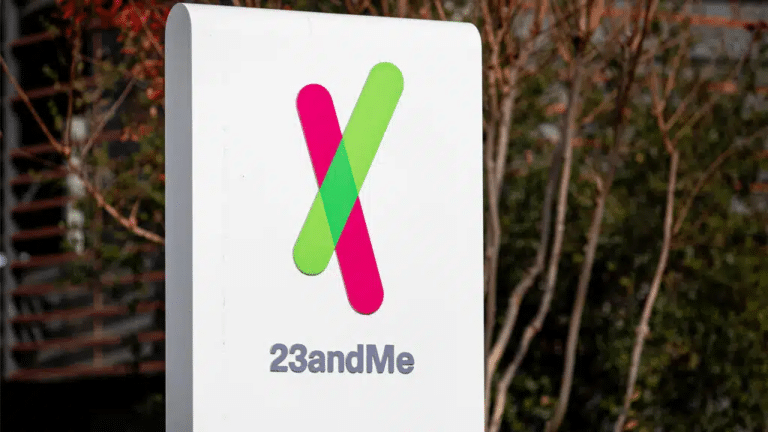
The population of the U.S. is aging at an unprecedented rate. By 2035, there will be more people over 65 than children in the U.S., driving healthcare costs up and posing new economic challenges. Both U.S. presidential candidates, Democrat Kamala Harris and Republican Donald Trump, have proposed measures related to these issues. Yet, while an aging population is a challenge for policymakers, it presents a unique opportunity for investors. Here’s how small-cap stocks could help them to profit from this demographic shift.
America’s aging population
The U.S. faces an unprecedented rise in people aged 65 and older, according to the Population Reference Bureau (PRB). By 2050, this age group is projected to reach 82 million people, a 47% increase from 2022. Newsweek reports that by 2035, for the first time in U.S. history, older adults will outnumber children.
This demographic shift means higher costs for U.S. government welfare programs like Social Security and Medicare. Overall healthcare spending in the U.S. is expected to grow 5.1% annually through 2030 to reach $6.8 trillion, or 19.6% of GDP. Medicare expenses are projected to increase even faster, at 7.2% per year.
During the campaign, both Harris and Trump have put forward proposals in response to the demographic shift. Trump has proposed tax incentives for those who care for elderly family members at home (in 2020, approximately 53 million people in the U.S. provided unpaid care for family members). He has also suggested eliminating taxes on Social Security benefits for elderly Americans.
Harris has proposed expanding Medicare to cover home-care services for the elderly, including caregiving support. This is aimed at the “sandwich generation” — middle-aged adults caring for both children and aging parents, Reuters reports. It would help families to save on costly nursing home expenses while boosting the care economy, building on an initiative introduced in 2021 by sitting U.S. President Joe Biden. This care economy includes jobs, often performed for minimum wage or voluntarily, caring for children and the elderly.
While it’s unclear which proposals will become policy, investors may still be able to benefit from the changing demographic backdrop, writes Jeff Remsburg, editor of the InvestorPlace Digest newsletter and former vice president of research at Cambria Investment Management.
What are the key sectors for small-cap investors to look at?
Health care and telemedicine
Healthcare is the most obvious sector poised to benefit from an aging population, according to Morningstar.
- Viemed Healthcare provides in-home respiratory support. As the company highlighted at the springtime LD Micro conference in New York, home health services are a growing trend, allowing patients to be around family and reduce expenses compared to hospital care.
Viemed believes demand for its services is potentially enormous. Approximately 25 million Americans suffer from chronic obstructive pulmonary disease, with 1.25 million of them needing respiratory support.
Viemed’s business could also benefit from the rising popularity of GLP-1 weight-loss drugs (the most popular on the market are Wegovy by Novo Nordisk of Denmark and Zepbound by Eli Lilly of the U.S.), the company noted during an earnings call with analysts and investors. Excess weight often leads to sleep apnea — temporary breathing pauses during sleep — which can sometimes be alleviated with respiratory support.
Analyst view: The three analysts covering Viemed rate it a “buy,” with an average target price of $12.27 per share. The stock closed at $8.55 per share on Thursday, October 31.
- WELL Health Technologies owns and operates outpatient clinics, provides IT solutions for doctors and hospitals, and offers telemedicine services. It has developed an AI-powered tool that helps cardiologists identify patients at high risk for cardiovascular diseases. WELL’s decision-support system can detect over 100 conditions, including hypertension and diabetes. Recently, WELL announced that its subsidiary, Wisp, would offer services for women dealing with obesity and hormonal issues, such as menopause.
Analyst view: WELL stock is traded over the counter. Fourteen analysts who cover the company have a “buy” recommendation. One other recommends holding it. Their average target price is $7.44 per share, versus the last closing price of $3.18 per share on October 31.
- LifeMD operates in the telemedicine sector, offering services like weight management and health support for men and women. It also provides in-home lab services and prescription delivery. Overall, LifeMD estimates its total addressable market at $170 billion. The growing demand for telemedicine is benefiting companies like LifeMD and its partner, Withings Health Solutions, which provides participants in its weight management program with scales and blood pressure monitors.
Analyst view: The seven analysts tracking LifeMD rate it a “buy,” with an average target price of $12.57 per share. The stock last closed at $4.08 per share on October 31.
Senior care facilities
The U.S. has a wide variety of senior living facilities, from medical care institutions to independent living communities, according to Mordor Intelligence. The market for senior housing was estimated at nearly $100 billion in 2024.
Against this backdrop, investors may want to consider real estate investment trusts (REITs) that specialize in senior healthcare properties. Generally, REITs are required to distribute at least 90% of taxable income to shareholders and offer relatively high dividend yields, MarketWatch notes.
- National Health Investors (NHI): In late September, BofA Securities initiated coverage on NHI with a “buy” rating and a target price of $92 per share. About 95% of NHI’s portfolio consists of nursing homes and skilled nursing facilities.
The primary growth driver for the business is the demographic shift in the U.S., noted MarketWatch, citing BofA Securities analyst Joshua Dennerlein. In his view, NHI shares are a relatively low-risk way to invest in America’s aging population
Analyst view: The recommendations of the six analysts covering NHI are split with four “buys” and two “holds.” Their average target price is $85.86 per share, versus the October 31 close of $76.65 per share.
- American Healthcare REIT: Morgan Stanley has spotlighted American Healthcare REIT as a top pick, as reported by Business Insider. The company describes itself as one of the largest healthcare REITs in the U.S., managing 318 facilities, including housing, hospitals, and senior living communities.
Analyst view: Of the eight analysts who cover American Healthcare REIT, seven have “buy” recommendations versus one “hold” call. The average target price is $27.63 per share, while it last closed at $26.60 per share on October 31.
- Strawberry Fields REIT: This REIT specializes in senior care facilities. CEO Moishe Gubin says the company’s name was inspired by the 1967 Beatles song, as many of its clients are from the aging baby boomer generation. Strawberry Fields manages 79 facilities, offering accommodation, food, and services like Alzheimer’s care, rehabilitation, and after-surgery support.
Analyst view: The two analysts who track Strawberry Fields have “buy” calls, with an average target price of $13.00 per share. Shares finished trading on October 31 at $1.27 apiece.
Healthcare and pharmaceuticals
The demand for elderly care is expected to rise significantly as the number of Americans with Alzheimer’s disease doubles to 13 million by 2050, according to PRB projections. Last year, the U.S. FDA approved the first drug to slow the progress of Alzheimer’s, developed by Biogen and Eisai. This year, Eli Lilly received approval for its own treatment.
- ProMIS Neurosciences is a micro-cap company pursuing an Alzheimer’s treatment, though it is still in the early stages.
Analyst view: The two analysts covering ProMIS recommend buying the stock, with an average target price of $8.75 per share. Shares last ended trading at $1.27 apiece as of October 31.
The most common age-related eye condition is cataracts, Fortune Business Insights notes. They can be surgically removed, but special lenses are required after surgery. Additionally, more screen time has increased demand for eyecare products.
- Kits Eyecare: This smaller Canadian company makes prescription and nonprescription glasses and contact lenses. In the third quarter of 2024, the top line grew 34% year over year to $41.7 million. Cofounder Joseph Thompson has estimated the company’s potential market at $80 billion in the U.S. and $10 billion in Canada.
Analyst view: Kits Eyecare shares trade in Toronto. All seven analysts following the company rate it a “buy,” with an average target price of CAD14.86 per share. The stock last closed at CAD10.09 on October 31.













